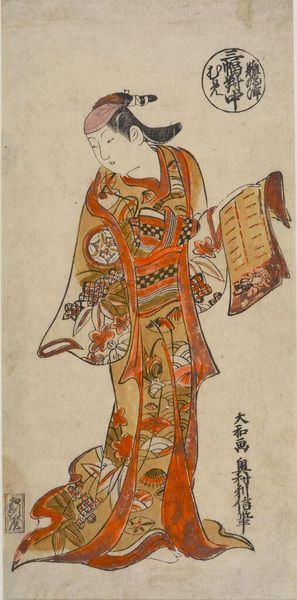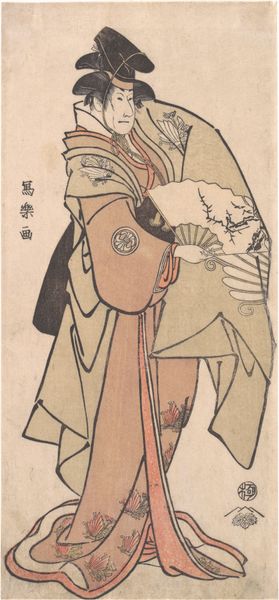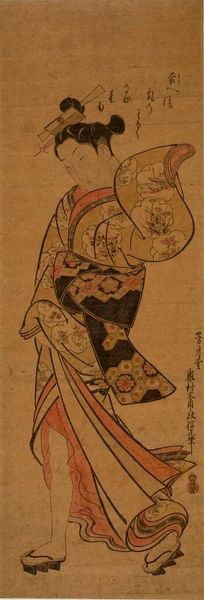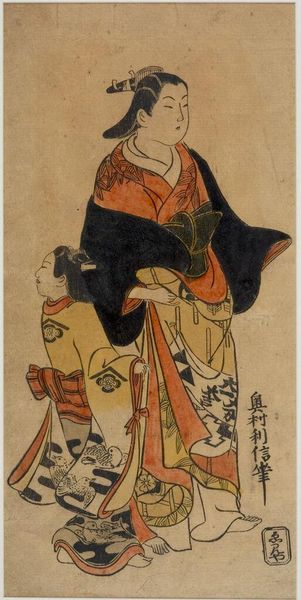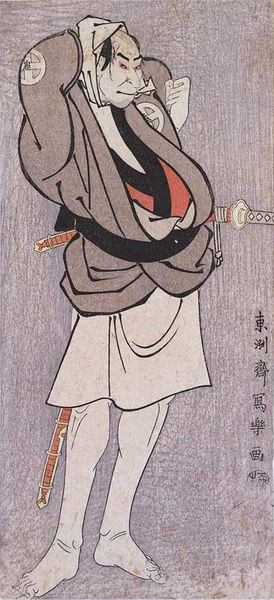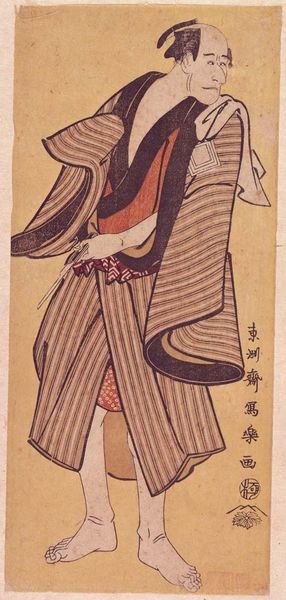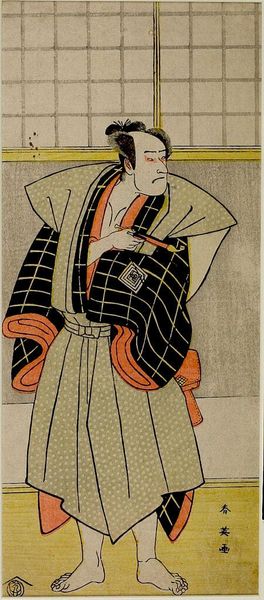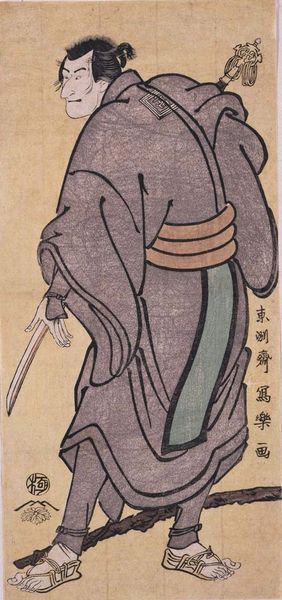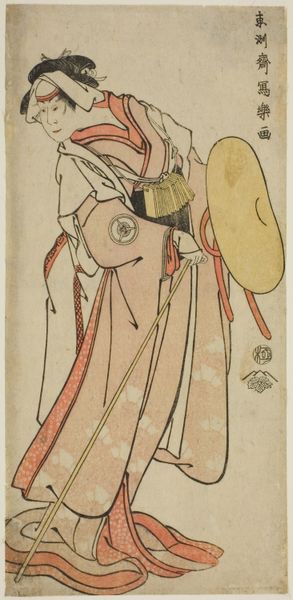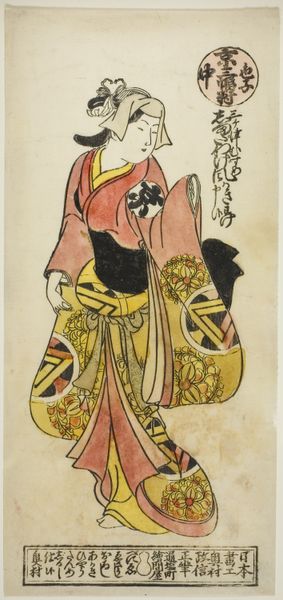
print, ink, woodblock-print
#
portrait
#
ink painting
# print
#
asian-art
#
ukiyo-e
#
figuration
#
ink
#
woodblock-print
#
genre-painting
Copyright: Public domain
Curator: The work we're observing is a woodblock print by Tōshūsai Sharaku, created in 1794. Its title is "Kabuki Actor Ōtani Tokuji as Monogusa Tarō." The Tokyo National Museum currently houses this remarkable example of Ukiyo-e artistry. Editor: Oh, this is compelling! I'm immediately struck by the off-kilter pose and that comical yet weary expression. It feels… unexpectedly human. Almost vulnerable. Curator: That tension is precisely what makes Sharaku so impactful. The work places a figure – a Kabuki actor in a specific role – within the rigid social hierarchy of Edo period Japan. However, through that distinctive figuration, Sharaku offered subtle commentaries on class and societal expectation. The portrayal deviates considerably from idealized representations prevalent at the time. Editor: I get a strong sense of someone caught between worlds. You have the remnants of formal attire, but those bare feet and the object he’s carrying...it throws the image into wonderful ambiguity. It asks, who is this character beyond his stage persona and beyond societal norms? Curator: Exactly. The print emerged during a period of strict social regulation under the Tokugawa shogunate, with laws dictating clothing, behavior, and even leisure activities for different classes. The artist utilized the genre of portraiture in a deliberate way. This portrayal subverts those expectations and almost invites us to see beyond surface appearances. Editor: I love that – it's like he's inviting us to question the whole performance of identity. It gives a voice, or at least a face, to the everyday person hidden beneath the Kabuki costume. It is funny too, and makes you wonder about the artist’s motivations when depicting the weariness so frankly, don't you think? Curator: Indeed, it speaks to a very specific form of visual resistance, perhaps. The Kabuki theatre, and the art surrounding it, provided an arena where some challenges to social decorum, even if oblique, could occur. By focusing on details and the character behind the makeup, Sharaku made that statement all the more intriguing. Editor: What a fabulous snapshot of humanity! Looking at it again, there’s a cheeky side to it too. Curator: Absolutely. This artwork exemplifies the complexities inherent in Ukiyo-e and visual representation, and invites continual reevaluation of what constitutes "portraiture."
Comments
No comments
Be the first to comment and join the conversation on the ultimate creative platform.
